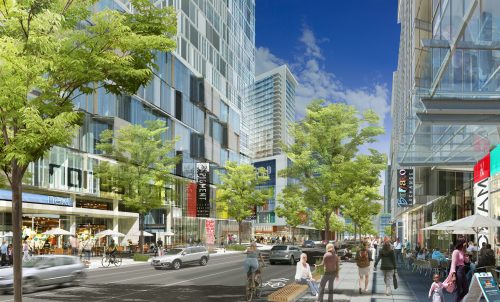
The Waterfront Secretariat leads the Toronto Waterfront Revitalization Initiative on behalf of the City of Toronto. Secretariat staff work with federal and provincial partners and Waterfront Toronto to ensure the right structures, agreements, and supports are in place to advance revitalization in the Designated Waterfront Area (DWA).
The Secretariat’s key functions include administering project funding, approving long-term funding proposals, coordinating development activities, and minimizing the risk exposure for the government partnership.
In October 2000, the Government of Canada, Province of Ontario, and City of Toronto each contributed $500 million, for a total of $1.5 billion, to formally launch the Toronto Waterfront Revitalization Initiative. At this time, each order of government established a waterfront secretariat to manage its respective participation in revitalization. Prior to this, the City of Toronto created the Toronto Waterfront Revitalization Taskforce, which established the initial vision for waterfront revitalization and highlighted the immense opportunity that the waterfront offers the City.
In 2002, the three governments signed the Toronto Waterfront Revitalization Corporation Act, which created the entity now known as Waterfront Toronto. All three orders of government are equal partners and Waterfront Toronto is the lead on all aspects of planning and development within the Designated Waterfront Area (DWA).
The Central Waterfront Secondary Plan was released in 2003 to spell out key public priorities, opportunities and an implementation process to ensure results. The Plan focuses on four core principles:

The revitalization of Toronto’s waterfront is the largest urban redevelopment project underway in North America, and is one of the world’s largest waterfront revitalization efforts ever undertaken. Between 2001 and 2013, work on the waterfront had generated approximately 16,200 full-time years of employment (FTEs), $1.7 billion of value added (direct, indirect, and induced), and increased tax revenues by $621.8 million (constant 2012 dollars). Over the long term, public investment in the East Bayfront and the West Don Lands is forecast to generate over 43,000 FTEs, $4.0 billion of value added (direct, indirect, and induced), and increase tax revenues by $1.5 billion (constant 2012 dollars).